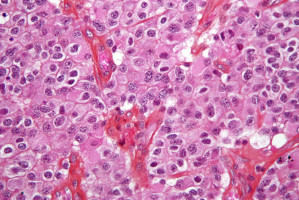
“Our results reinforce suggestions that LRIG1-3 could function as diagnostic markers and therapeutic targets in the treatment of gliomas.”
A new research paper was published in Oncotarget (Volume 16) on November 6, 2025, titled “LRIG1-3 in gliomas: LRIG1 protein expression decreased in higher grade gliomas.”
In this study by Marlene Happe, Saskia Kuhl, Lukas Görtz, Roland Goldbrunner and Marco Timmer, from the University of Cologne, researchers found that the LRIG1 protein, which may help suppress tumours, is present at lower levels in more aggressive gliomas, a type of brain tumour.
The findings suggest that LRIG1 could serve as a useful marker for tumour severity and potentially as a target for future therapies.
Gliomas are the most common malignant brain tumours in adults and carry a poor prognosis, particularly in their most severe form, glioblastoma.
This study investigated three related proteins: LRIG1, LRIG2, and LRIG3, which are involved in regulating cell growth signals.
While LRIG1 and LRIG3 have shown tumour-suppressing effects in previous studies, LRIG2 is thought to support tumour growth.
The researchers analysed tumour samples from patients to understand how these proteins behave across different glioma grades and how they respond to chemotherapy.
The results showed that LRIG1 protein levels decline significantly as tumour grade increases.
Low-grade gliomas displayed much higher LRIG1 expression than high-grade tumours.
Among high-grade tumours, primary glioblastomas had the lowest levels of LRIG1.
Interestingly, secondary glioblastomas, which typically develop from lower-grade tumours, had higher levels of LRIG1 than primary glioblastomas.
This difference may contribute to their relatively better clinical outcomes.
These results highlight LRIG1’s potential role in slowing tumour progression.
In contrast, LRIG2 showed a more complex pattern.
While its gene expression was higher in lower-grade tumours, the actual protein levels were slightly elevated in higher-grade ones, which are more aggressive.
This mismatch suggests that processes occurring after gene transcription may influence how much LRIG2 protein is produced.
“However, our data on LRIG2 indicate that its role in glioma may be more complex than previously thought, warranting further investigation.”
Concerning LRIG3, it was found in higher amounts in glioma tissue compared to surrounding healthy tissue.
Its expression was particularly high in low-grade tumours.
However, chemotherapy did not consistently affect LRIG3 levels, and results varied depending on tumour type and treatment status.
Overall, the study suggests that members of the LRIG protein family, especially LRIG1, could serve as important biomarkers to distinguish between glioma types and grades.
Although chemotherapy did not significantly change their expression in most cases, these proteins have high potential as diagnostic tools or therapeutic targets.
Further research is needed to better understand their roles in glioma development and treatment response.
Article: LRIG1-3 in gliomas: LRIG1 protein expression decreased in higher grade gliomas
Source: Impact Journals LLC